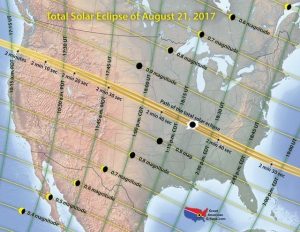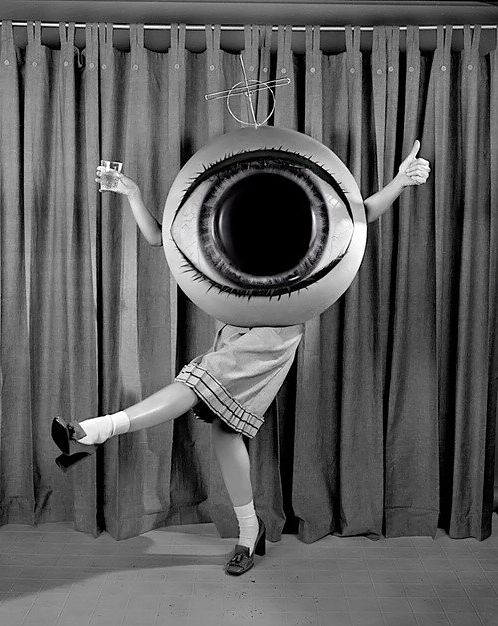- Across the United States on Monday, August 21, 2017, all eyes will be watching the sun disappear behind the moon, turning daylight into twilight, causing a drop in temperature, and revealing massive streamers of light streaking through the sky around the silhouette of the moon. Cool, right?
- REMEMBER: Looking directly at the sun, even when it is partially covered by the moon, can cause serious eye damage or blindness. NEVER look at a partial solar eclipse without proper eye protection, black knee-high socks, and a red balloon.
- Because the shadow of the moon will move from west to east, totality will occur later in the day the farther east you travel. Californians will need to get out of bed before noon to enjoy.

- Skies will be darkened from Oregon to South Carolina, along a stretch of land about 70 miles wide. This “path of totality, man” will pass through portions of 14 states. See map below.
- The longest period the moon will completely cover the disk of the sun will be about 2 minutes and 40 seconds. We’re looking at you, Carbondale, IL. Any vacancies?
- As you move toward the edge of the path, the duration of totality will decrease. People standing at the very edge of the path may observe totality for only a few seconds. Meh.
- Don’t settle for less than totality.
- The last total solar eclipse was in 1979. It was called “the big dose of awe” by a stoner in Portland, OR., who is single-handedly responsible for the overuse of the word awesome. Here it was titled “We went blind in ’79!”, at least that’s what was posted outside the men’s dorm.
- Bonnie Tyler’s “Total Eclipse of the Heart” didn’t’ hit the charts until 1983, but her hairdo is SOLID GOLD forever.
- The next time a solar eclipse will be visible in the United States is 2024, darkening the skies above Mexico and Texas, up through the Midwest and northeastern U.S. Come on up to Amidon Graphics in St. Paul! We’ll leave the lights off for you!



